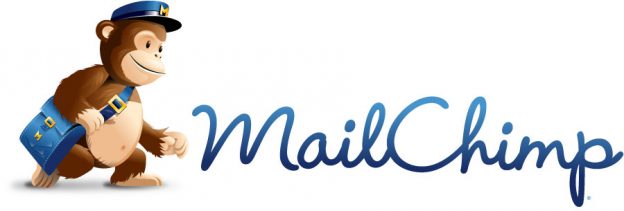With the use of social media on the rise, you would think email marketing might be dead…. WRONG, email marketing is alive and well and perhaps still one of the most effective marketing methods.
Email marketing means keeping in touch with your customers. Are you collecting email addresses of your customers, prospective customers and site visitors? If not, you should be.
There are many solutions to not only help you collect the email addresses, but also design and send first class email newsletters and announcements. Today I’m going to talk about MailChimp.
MailChimp (www.MailChimp.com) is one of my favorite services, not only because it does the job remarkably well, but because it’s free to get started, giving you the opportunity to start small, and on the cheap, and grow into a paid plan.
Their “Forever Free” plan allows you to have a substantial 2,000 subscribers and send 12,000 emails per month. That is typically quite enough for most websites starting up. When you go above 2,000 subscribers or need to send an unlimited amount of emails per month, they have plans that start at just $20/month. Or they offer “Pay as you go” plans where you buy email credits for .02 or .03 cents each for each email you send. Think of email credits like postage stamps and you simply buy a pack of credits and use them as you send messages.
After creating a free account, the first thing you’ll need to do is create a “List”. This is a mailing list. This might be something like “Newsletter List” or “Current Customers” or “Prospective Clients”. You can create as many lists as you like, and send messages to specific lists.
Whereas you might send your monthly newsletter to everyone, you might send different offers and specials to existing customers and different offers and specials to prospective customers.
Once you create a list, you can add subscribers any number of ways. You can manually enter them into the system, or you can import and copy and paste from a spreadsheet or text file. In my experience MailChimp offers the best and most-versatile import options compared to other services. You can even generate a signup form that you can embed in your website so people can signup for your newsletter themselves online.
Once you’ve built a list, you’re ready to create a Campaign. A campaign is just a fancy word for an email. This could be a newsletter, note to your customers, or some kind of promotion. The possibilities are endless. They offer a wide variety of templates to get you started, from very simple emails, to multi-column newsletters.
You can create your content without any technical knowledge of HTML, using a WYSIWYG (What you See is What You Get) editor that allows you full control of your design and the ability to insert graphics and images.
When you’re ready to send, you have various options to send immediately, or schedule it to send later. With paid accounts, you have even more options, like options to split your mailing or let MailChimp tell you the best time to send your email to ensure the most engagement.
The emails are delivered quickly and you’ll have access to full reports, like how many were sent, how many people opened it, how many people clicked on something in your email and how many bounced or could not be delivered.
They are fully CAN-SPAM compliant, so at the bottom of each email, it reminds them why they are on your list, and gives them a one-click option to unsubscribe.
If you’re looking for a way to get started with email marketing, check out MailChimp!


Email marketing is becoming harder and harder. Thanks for sharing these useful ideas with us Josh.